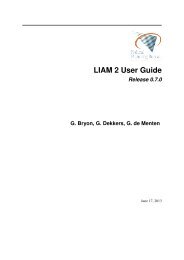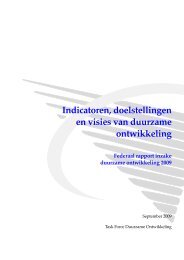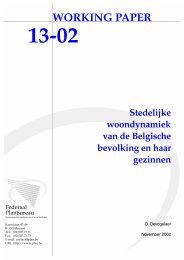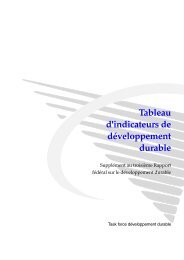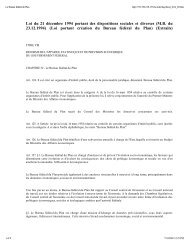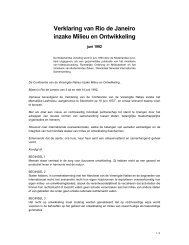long-term care use and supply in europe: projections for germany ...
long-term care use and supply in europe: projections for germany ...
long-term care use and supply in europe: projections for germany ...
You also want an ePaper? Increase the reach of your titles
YUMPU automatically turns print PDFs into web optimized ePapers that Google loves.
LONG-TERM CARE USE AND SUPPLY IN EUROPE | 9<br />
receive benefits. The number of people <strong>in</strong> need of <strong>care</strong> that were deemed <strong>in</strong>eligible to receive LTCI<br />
funds <strong>in</strong>cluded 3 million <strong>in</strong> private ho<strong>use</strong>holds <strong>in</strong> 2002 <strong>and</strong> 45,000 people <strong>in</strong> <strong>in</strong>stitutions <strong>in</strong> 2005<br />
(Schulz, 2011). The prevalence of <strong>in</strong>stitutionalisation is thus likely understated.<br />
Benefits are made available to all <strong>in</strong>sured persons irrespective of age, <strong>in</strong>come or wealth. Benefit levels<br />
are based on need, where the “need of <strong>long</strong>-<strong>term</strong> <strong>care</strong>” legally refers to those who, ow<strong>in</strong>g to a physical,<br />
psychological or mental disease or h<strong>and</strong>icap, require significant help to carry out the daily <strong>and</strong> recurr<strong>in</strong>g<br />
activities of everyday liv<strong>in</strong>g over a pro<strong>long</strong>ed period of time (<strong>for</strong> at least six months). Eligibility is based<br />
on whether <strong>in</strong>dividuals need help carry<strong>in</strong>g out at least two basic activities of daily liv<strong>in</strong>g <strong>and</strong> one<br />
additional <strong>in</strong>strumental activity of daily liv<strong>in</strong>g (IADL). Dependency levels are based on how often<br />
assistance is needed <strong>and</strong> how <strong>long</strong> it takes a non-professional <strong>care</strong>giver to help the dependent person 4 ,<br />
as follows:<br />
• Care level I: People who need assistance with personal hygiene, feed<strong>in</strong>g or mobility <strong>for</strong> at least<br />
two activities at least once per day <strong>and</strong> who additionally need ho<strong>use</strong>hold help <strong>for</strong> at least 90<br />
m<strong>in</strong>utes per day (45 m<strong>in</strong>utes of which is accounted <strong>for</strong> by basic <strong>care</strong>) several times per week.<br />
• Care level II: People who need assistance with at least two basic ADL at least three times per day<br />
at various times of the day <strong>and</strong> who additionally need help <strong>in</strong> IADL (two hours of which is<br />
accounted <strong>for</strong> by basic <strong>care</strong>) several times per week.<br />
• Care level III: People who need assistance with at least two ADL around the clock <strong>and</strong> who<br />
additionally need help <strong>in</strong> IADL <strong>for</strong> at least five hours per day (four hours of which is accounted<br />
<strong>for</strong> by basic <strong>care</strong>) several times per week.<br />
• Hardship cases: People who exceed the requirements of <strong>care</strong> level III by need<strong>in</strong>g assistance with<br />
ADL <strong>for</strong> at least seven hours a day, at least two of which are dur<strong>in</strong>g the night or whose basic <strong>care</strong><br />
may only be met by several people work<strong>in</strong>g at the same time 5 .<br />
Thus, we much keep <strong>in</strong> m<strong>in</strong>d <strong>in</strong> the follow<strong>in</strong>g section that functional impairment is def<strong>in</strong>ed differently<br />
<strong>for</strong> the German, Dutch <strong>and</strong> Spanish cases. Nonetheless, Table 2.3 demonstrates that the prevalence of<br />
<strong>in</strong>stitutionalisation among persons receiv<strong>in</strong>g LTCI benefits <strong>in</strong>creases with the severity of disability <strong>and</strong><br />
age (age be<strong>in</strong>g correlated with both health status <strong>and</strong> marital status). More <strong>in</strong>terest<strong>in</strong>gly, prevalence rates<br />
are higher <strong>for</strong> women except <strong>for</strong> <strong>care</strong> level I be<strong>for</strong>e age 75 <strong>and</strong> <strong>for</strong> <strong>care</strong> level II be<strong>for</strong>e age 70. In other<br />
words, prevalence rates <strong>in</strong>crease more quickly with age <strong>for</strong> women than <strong>for</strong> men. This result can be<br />
partly expla<strong>in</strong>ed by differences <strong>in</strong> marital status between men <strong>and</strong> women at old ages, with women be<strong>in</strong>g<br />
more likely to live alone.<br />
4 The Medical Review Boards of the Statutory Health Insurance Funds per<strong>for</strong>m the assessment to de<strong>term</strong><strong>in</strong>e<br />
whether an <strong>in</strong>dividual is entitled to benefits. Individuals are assessed <strong>for</strong> limitations <strong>in</strong> activities of daily liv<strong>in</strong>g,<br />
such as bath<strong>in</strong>g <strong>and</strong> dress<strong>in</strong>g, <strong>and</strong> <strong>in</strong>strumental activities of daily liv<strong>in</strong>g, such as shopp<strong>in</strong>g <strong>and</strong> cook<strong>in</strong>g, as well as<br />
hours of <strong>care</strong> needed per day. These assessments have foc<strong>use</strong>d largely on physical needs <strong>for</strong> personal <strong>care</strong>,<br />
nutrition <strong>and</strong> mobility rather than on needs <strong>for</strong> supervision or cue<strong>in</strong>g, which persons with dementia or learn<strong>in</strong>g<br />
disabilities often need. The new LTCI re<strong>for</strong>m changed this situation <strong>in</strong> 2008. People whose competence <strong>in</strong> cop<strong>in</strong>g<br />
with everyday life is considerably impaired are now assessed on the basis of a special criteria catalogue. If<br />
applicants fulfil the criteria, they are eligible to receive additional benefits. Also, people who do not fulfil the<br />
criteria <strong>for</strong> <strong>care</strong> level I are now entitled to receive benefits (MDS, 2008).<br />
5 Beca<strong>use</strong> few <strong>in</strong>dividuals <strong>in</strong> our data were categorized as be<strong>in</strong>g hardship cases, we have not reported prevalence<br />
rates of <strong>in</strong>stitutionalization <strong>for</strong> this category of <strong>care</strong> level <strong>in</strong> Table 2.3.



